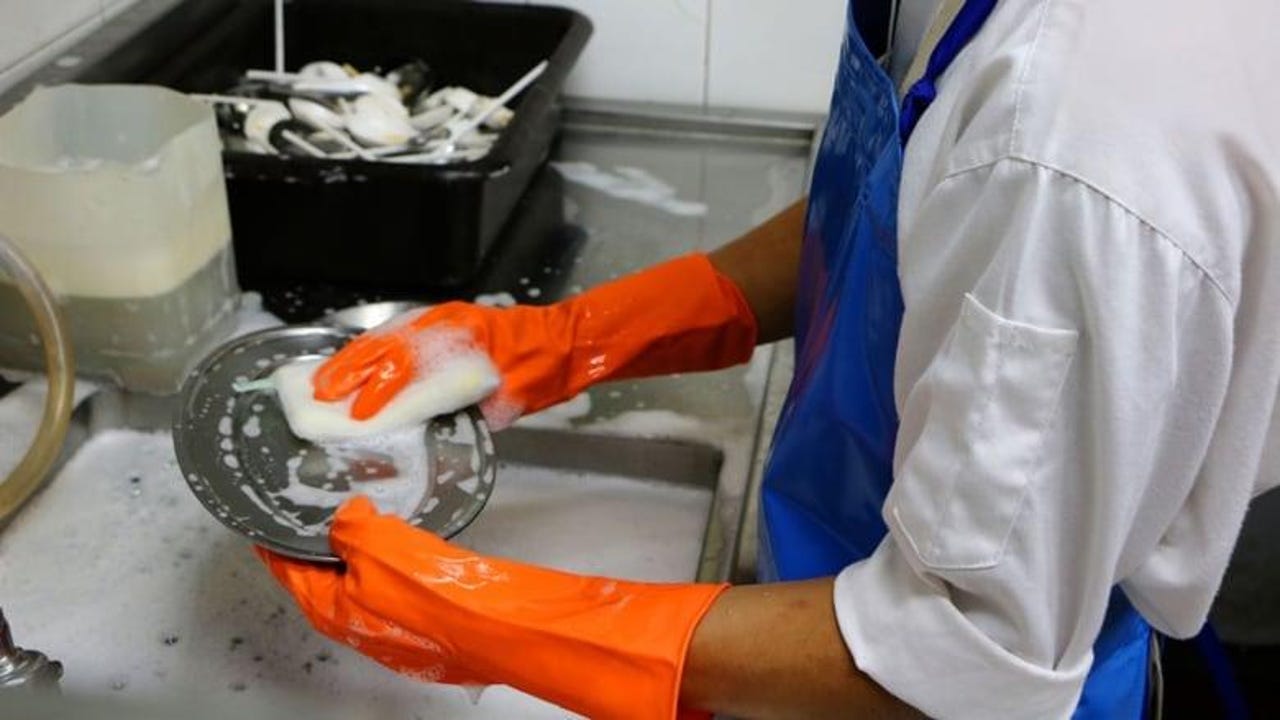The robot will do the dishes: A robotic dishwasher for commercial kitchens


I've often argued that dishwashers, not roving vacuum cleaners, were the first home robot to see wide adoption. Shut the door, push the button, and dishwashers cycle through several tasks on their own, without direct oversight from operators. Some modern dishwashers even sense how dirty dishes are and select a washing strategy accordingly.
So why do most commercial kitchens still employ human washers?
The answer is speed and cost. Many restaurants use a combination of human scrubbers feeding large commercial machines, but for high throughput restaurants it turns out people are still faster and more skillful at scrubbing off marinara and baked on parmesan.
Unfortunately, keeping dish washing staff is not easy for restaurants. On average, dish washers, who arguably have the most physically demanding job in the kitchen, only stay in their position about a month. A new automated solution from Dishcraft Robotics is hoping to become the first autonomous alternative.
If it can demonstrate a real ROI while solving a huge labor problem that's pervasive in the restaurant industry, the potential upside is huge. There are over 1 million restaurants in the U.S. alone, an industry worth $863 billion. Overall, the industry is starting to take automation seriously, with new concepts like Zume, a pizza chain that uses robots to prepare its pies, popping up globally.
The Dishcraft robotic system uses grey water and what the company calls "energy-efficient cleaning mechanisms" to clean each dish individually, rather than the batch cleaning performed by conventional machines. Machine vision and learning enable the system to inspect each dish in a fraction of a second for food residue to achieve consistently clean dishes.
"After learning about the problem created by a high dishwasher turnover rate, I worked in commercial dishrooms to experience their environment, culture, and operations firsthand. I saw an opportunity to solve the issues at hand through the use of robotic technology," says Linda Pouliot, CEO and co-founder of Dishcraft. "The high employee churn is an indicator that these jobs are unpleasant and not desirable. By automating the dishroom, we are able to clean dishes shift over shift while transforming the role of the dishwasher into one that is simpler, easier, and has more growth opportunity."
The team has deep roots in robotics. Pouliot co-founded Neato Robotics, an iRobot competitor selling robot vacuum cleaners. Paul Birkmeyer, the company's co-founder and CTO, was previously co-founder of Dash Robotics, which made low-cost, build-it-yourself, bio-inspired robots promoting STEM engagement for kids.
Dishcraft has been working on its automated dish room system since 2015, but this week marks the first public unveiling. That relatively long development timeline speaks to the engineering challenges inherent in creating a system that can handle a range of items of varying shapes and sizes and apply effective cleaning strategies that improve on human performance.
"One of my first jobs was as a dishwasher so I've seen first-hand how outdated and inefficient dishrooms are today and how important they are to the overall operations in a kitchen," said Steve Anderson, founder of Baseline Ventures. "Dishcraft is bringing entirely new thinking, technology, and processes to tackle this problem, and it is long overdue."
Baseline is one of the company's investors. So far, Dishcraft has $25 million in venture backing.